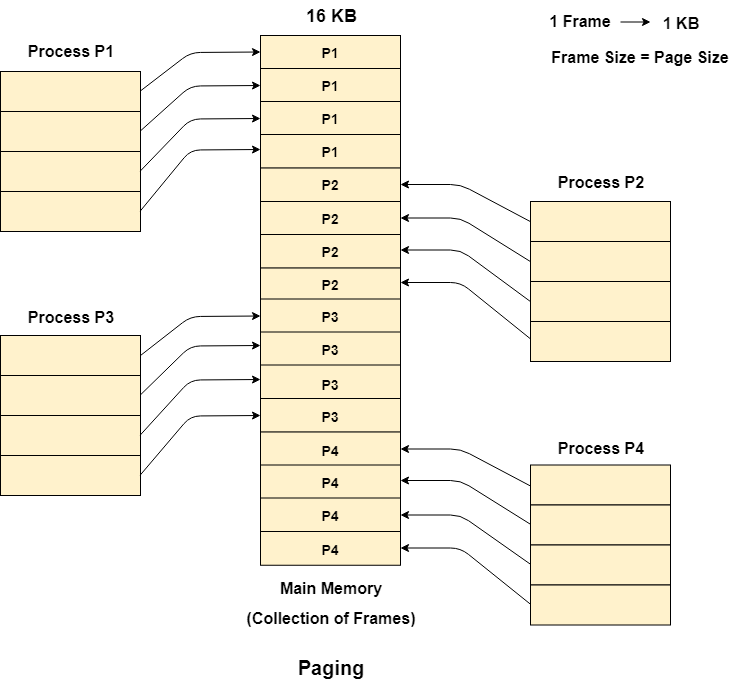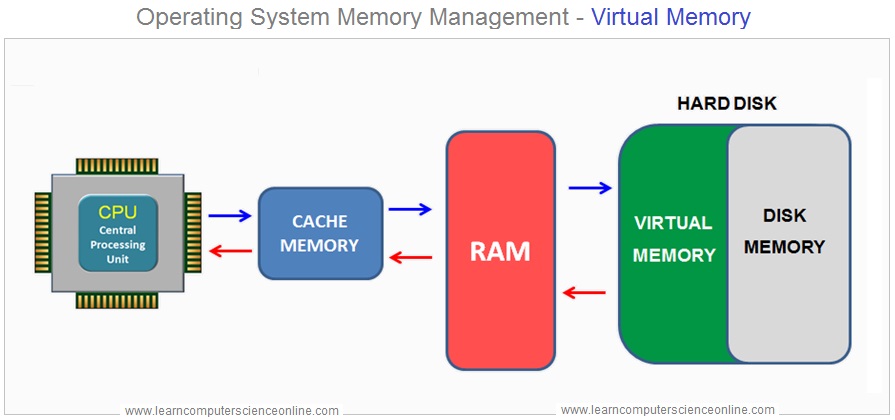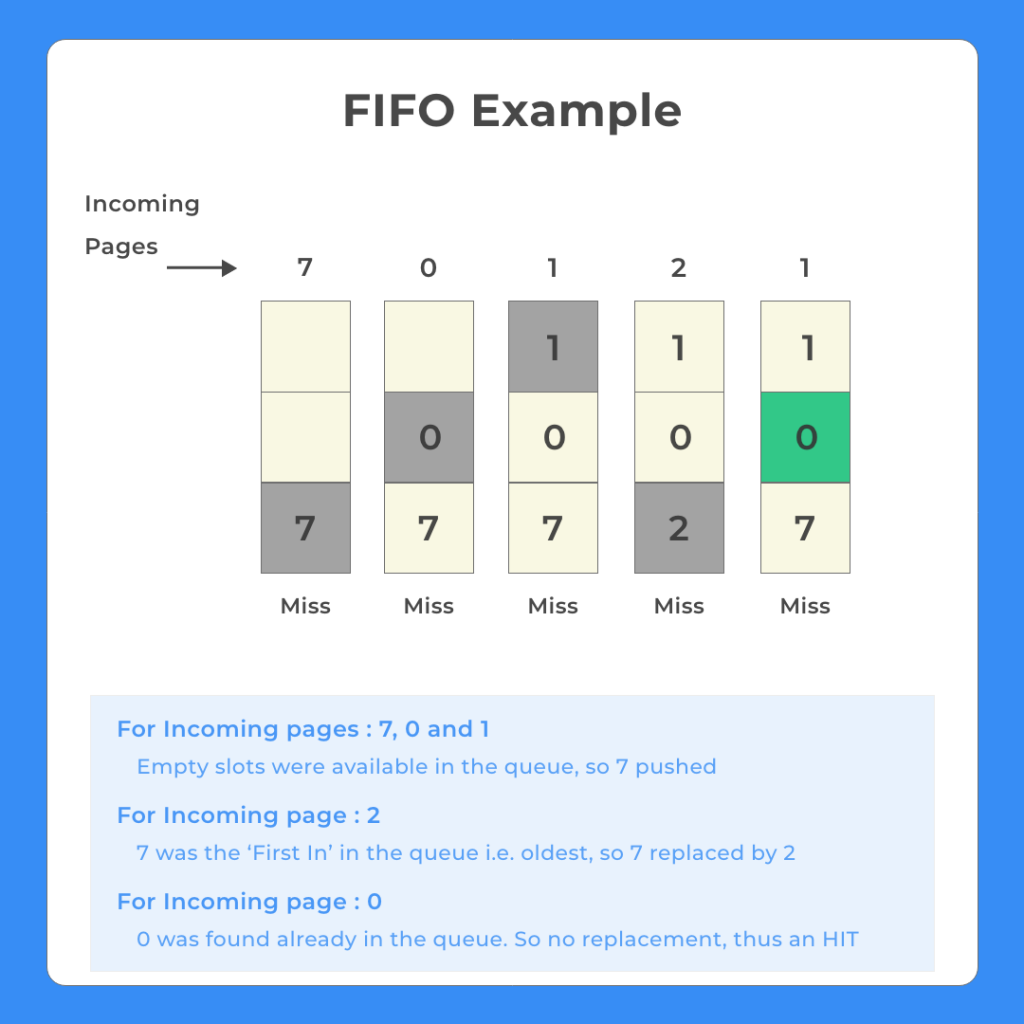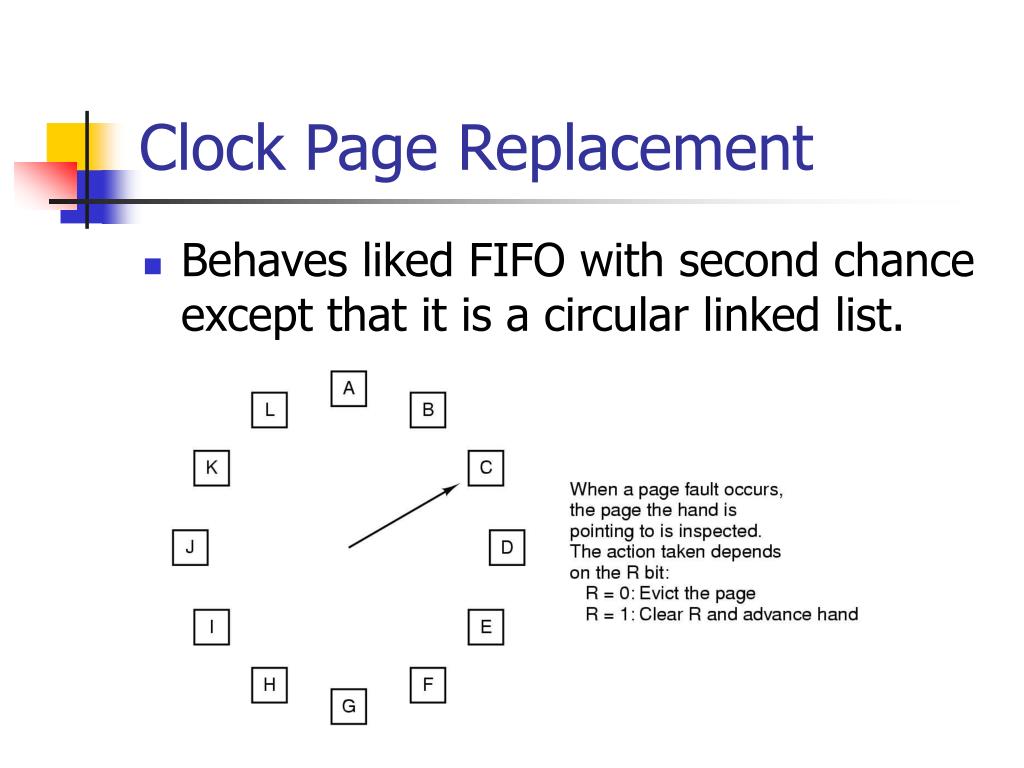memory management - TarisMajor/5143-OpSystems GitHub Wiki
Memory Management in Operating Systems
Memory management is a cornerstone of operating systems, enabling efficient resource allocation, process isolation, and optimal performance. This entry explores key concepts, techniques, and algorithms associated with memory management.
Table of Contents
- Logical Address vs. Physical Address
- Memory Allocation Techniques
- Paging
- Segmentation
- Page Tables
- Virtual Memory
- Page Replacement Algorithms
- Thrashing
- Fragmentation
- Conclusion
- References
Logical Address vs. Physical Address
- Logical Address: Virtual address generated by the CPU.
- Physical Address: Actual memory location in RAM.
- Key Component: The Memory Management Unit (MMU) maps logical addresses to physical addresses.

Memory Allocation Techniques
Contiguous Allocation
Allocates a single continuous block of memory.
- Advantages: Simplifies address calculation.
- Drawbacks: Prone to fragmentation and requires large continuous memory blocks.
Non-Contiguous Allocation
Allocates scattered memory blocks, often using paging or segmentation.
- Advantages: Efficient memory utilization.
- Drawbacks: Increases complexity in memory management.
Paging
Memory is divided into fixed-size pages, which are mapped to physical frames using page tables.
- Advantages: Eliminates external fragmentation.
- Drawbacks: Adds overhead due to page table management.
Example Table:
| Logical Page | Physical Frame |
|---|---|
| Page 1 | Frame 4 |
| Page 2 | Frame 7 |
| Page 3 | Frame 1 |

Segmentation
Memory is divided into logical segments such as code, data, and stack.
- Key Difference: Segmentation uses variable-sized segments, while paging uses fixed-sized blocks.
Comparison Table:
| Feature | Paging | Segmentation |
|---|---|---|
| Block Size | Fixed | Variable |
| Purpose | Divide memory uniformly | Divide logically |

Page Tables
Page tables store mappings between logical pages and physical frames.
- Single-Level Page Tables: Easy to implement but consumes a lot of memory.
- Multi-Level Page Tables: Use a hierarchical structure to save memory.
- Inverted Page Tables: Use a single table for the entire system to reduce space requirements.

Virtual Memory
Allows processes larger than physical memory to run by using disk space as an extension of RAM.
- Page Fault: Occurs when a required page is not in memory.
- Demand Paging: Loads pages into memory only when required, saving memory space but increasing page fault latency.

Page Replacement Algorithms
First-In-First-Out (FIFO)
Replaces the oldest page in memory.
- Drawback: Suffers from Belady's anomaly, where increasing memory size can lead to more page faults.

Figure 1: FIFO Page Replacement Algorithm.
Least Recently Used (LRU)
Replaces the page that has not been used for the longest time.
- Implementation: Uses counters or stacks to track usage.

Figure 2: LRU Page Replacement Algorithm.
Optimal Page Replacement
Replaces the page that will not be used for the longest time in the future.
- Serves as a theoretical benchmark but is difficult to implement practically.
Figure 3: Optimal Page Replacement Algorithm.
Clock (Second-Chance) Algorithm
A practical approximation of LRU, using a circular queue to track usage.

Figure 4: Clock (Second-Chance) Page Replacement Algorithm.
Thrashing
Occurs when excessive paging activity leads to a significant slowdown of the system.
- Cause: High memory demand exceeding available capacity.
- Solution: Implementing the working set model to limit active processes or allocating more memory.
Fragmentation
Internal Fragmentation
Wasted space within allocated memory blocks due to fixed-size allocation.
Figure 1: Example of Internal Fragmentation.
External Fragmentation
Scattered free memory prevents allocation of large contiguous blocks.

Figure 2: Example of External Fragmentation.
Conclusion
Memory management is critical for modern operating systems, ensuring efficient resource utilization and process execution. Techniques like paging, segmentation, and virtual memory play a key role in balancing performance and complexity.
References
- Silberschatz, A., Galvin, P. B., & Gagne, G. (2018). Operating System Concepts. Wiley.
- Tanenbaum, A. S., & Bos, H. (2015). Modern Operating Systems. Pearson.